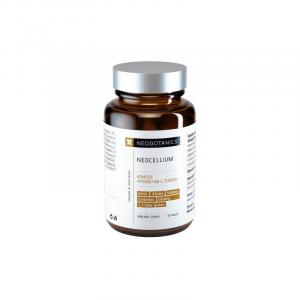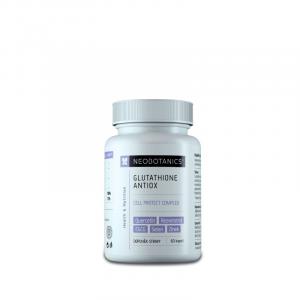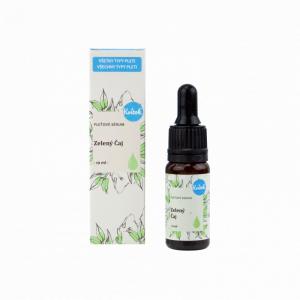
How to Combat Sagging Skin After Weight Loss and Feel Great

Sagging Skin After Weight Loss - Why It Happens and What to Do About It
The journey to a healthier body is often long and challenging. Many people who decide to lose weight spend weeks or months changing their eating habits, engaging in regular exercise, and adopting an overall healthier lifestyle. The result can be not only better fitness and a lower number on the scale but also an unexpected problem – sagging skin after weight loss, especially in the abdominal area. This phenomenon can be a source of frustration and disappointment because despite success in losing weight, the body doesn't look as many had hoped.
Why Does Skin Sag After Weight Loss?
Human skin has an extraordinary ability to stretch and contract. This elasticity is due to the presence of collagen and elastin – two proteins that form its supportive structure. However, when a person gains weight, the skin stretches to accommodate a larger body volume. If this state persists for a long period, such as years, the structure of the skin changes. Collagen fibers can become so damaged that they cannot retract the skin after weight loss. The result is sagging, loose skin – most commonly on the abdomen, arms, thighs, or breast area.
Several factors influence the degree of skin sagging. Age is one of them – with increasing years, the production of collagen and elastin naturally declines, making it harder for the skin to regenerate. Genetics, the speed of weight loss, the amount of weight lost, and health status also play a role. For example, people who have lost dozens of kilograms in a short time, perhaps due to bariatric surgery or a very restrictive diet, often struggle with sagging skin.
The Most Common Problem - Sagging Skin on the Abdomen
One of the most discussed areas is sagging skin on the abdomen after weight loss. The abdominal area tends to be a place where fat is easily stored and difficult to lose. Additionally, the skin on the abdomen is specific in its structure – it is naturally elastic due to pregnancy, but during excessive weight gain, it often loses elasticity to such an extent that it does not return to its original state after weight loss.
Many people describe that even when they manage to lose weight to a healthy level, the skin on their abdomen remains loose, forming "folds" or even hanging over the waistband. This condition can be uncomfortable not only aesthetically but also practically – skin friction can cause irritation, heat rash, or even infections.
Can Sagging Skin After Weight Loss Be Firmed?
The good news is that in some cases, the skin can naturally retract. However, it depends on age, genetics, and the amount of weight lost. People under 30 who have lost weight gradually and moderately tend to have much better results than older individuals or those who have shed a large amount of weight quickly.
One of the keys to supporting skin elasticity is proper nutrition and hydration. A diet rich in proteins, vitamin C, zinc, and omega-3 fatty acids supports collagen production. Adequate water intake is also important – dehydrated skin is more prone to sagging.
Regular strength training can help make the skin appear firmer by building muscle mass underneath it. Exercises focusing on the abdomen, back, and core can firm up these areas. It's not a miracle solution, but long-term exercise combined with a balanced diet can bring visible improvement.
When Only Surgery Can Help
In some cases, the skin is so loose that it cannot be tightened by any non-invasive method. Especially people after extreme weight loss – for example, those who have lost 40, 50, or more kilograms – often seek help from plastic surgeons. Surgeries such as abdominoplasty (tummy tuck) remove excess skin and fat and tighten the muscles in the abdominal wall.
Such a procedure, however, is not without risks and requires careful consideration. It is an invasive surgery with longer recovery and potential complications. Moreover, it can be financially demanding and is rarely covered by insurance – usually only in cases where excess skin causes health issues.
Natural Care and a Sustainable Approach
Not everyone wants or can undergo surgical intervention. More and more people are seeking alternative, natural ways to care for sagging skin. This is where natural cosmetics and a sustainable lifestyle come into play.
Plant oils, such as argan, almond, or rosehip oil, are rich in vitamins and antioxidants that support skin regeneration. Regular massage with body oils not only improves blood circulation to the skin but also helps better absorption of active ingredients. Natural body wraps containing seaweed, clay, or caffeine can tone and slightly tighten the skin.
Try our natural products
Including dry brushing in care – a simple technique that stimulates the lymphatic system and removes dead skin cells – can help. Regularly performed brushing before showering helps the skin look fresher and firmer.
Inspiration from Real Life
The story of 33-year-old Hana from Olomouc shows that the path to firmer skin can be long but not impossible. Hana lost about 25 kilograms over two years. "I long hoped that my belly would tighten on its own. But it wasn't that simple," she admits. After consulting a nutritionist and trainer, she incorporated strength training, increased her protein intake, and began using body oils with collagen. "Even though my belly isn't quite like it was before having kids, I feel much better in my body. And that's important to me."
Such examples show that care for the body after weight loss doesn't end with reaching the target weight. It marks the beginning of a new phase – skin care, muscle strengthening, and accepting a transformed body.
What Can Help in Caring for Sagging Skin
- Healthy diet rich in proteins and vitamins that support collagen production (e.g., C, E, A)
- Regular strength training focusing on problem areas
- Hydration – at least 2 liters of water a day
- Natural cosmetics containing collagen, elastin, or caffeine
- Massages and skin brushing to improve circulation
- Patience and realistic expectations
Many dermatologists and fitness experts agree: “Skin is a living organ and needs time – just as we didn’t change our bodies overnight, we can’t expect the skin to tighten in a few weeks.”
Accepting one's body, including its imperfections, may be the most important step. Although sagging skin after weight loss can be a challenge, it is also a testament to inner strength and determination. And those are values that matter – much more than the number on the scale.





